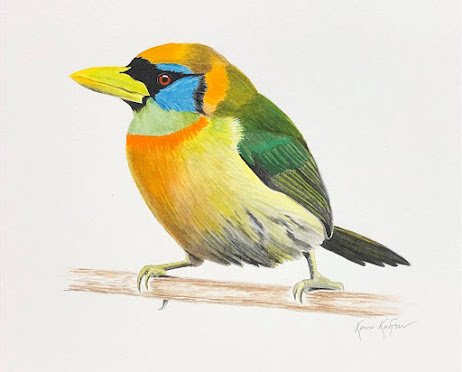From a state of contemplation, Kenn writes: The American Birding Association (ABA) has been an important part of my life ever since I joined, at the age of 16, back in the 1970s. The ABA was a brand-new organization then, and it served a unique role in connecting the active birders of the U.S. and Canada. Its little bimonthly magazine, Birding, was a treasure trove for me as a teenager, giving me tips on bird-finding and bird identification that I wouldn’t have known about in any other way. When I started traveling, as a hitch-hiking, teenaged birder, the ABA connected me with other enthusiasts and with prime birding hotspots, and helped to put me on a course as a professional naturalist. In subsequent years I was involved with ABA in many ways. I taught bird I.D. workshops at many of their conventions, and later I began giving evening keynote talks at these events; for a while, I had spoken at more ABA conventions than anyone else. I wrote dozens of pieces for Birding magazine, and...







Lovely photos, Mr. & Mrs. K!
ReplyDeleteIsn't it amazing the behavior ecology you can pick up at feeders?
ReplyDeleteWell said!
ReplyDeleteI love how you describe them as having "an admirable level of independence", Kenn. We usually have a couple of them at our feeders, but I'll have to watch closer to see if I notice the same pattern of them only coming when there's snow on the ground -- interesting! ~Kim
ReplyDeleteNice set of images, Kenn. I am fond of sparrows as a group, especially the Tree Sparrow with its bi-colored bill and rufous coloring. I have only seen them singly here in Indiana. How fun it would be to see them in flocks! Very informative post.
ReplyDeleteDear Mr. K,
ReplyDeleteI'm a big fan of your work and I was wondering if you will be attending the CMBO event in May?
Regards,
Lori
Yeh, the ATSP is a favorite winter bird! Always anticipate it at the feeder when we get our first good snow in December.
ReplyDeleteThank you for this post. Gives us a new appreciation of this little bird. Also, we greatly enjoyed the talks that you both gave at Shreve. They were really good. A lot different than what we expected. You each gave a different and unique perspective on the subjects (as you did with this post).
ReplyDeleteBob R
Beautiful photos
ReplyDelete